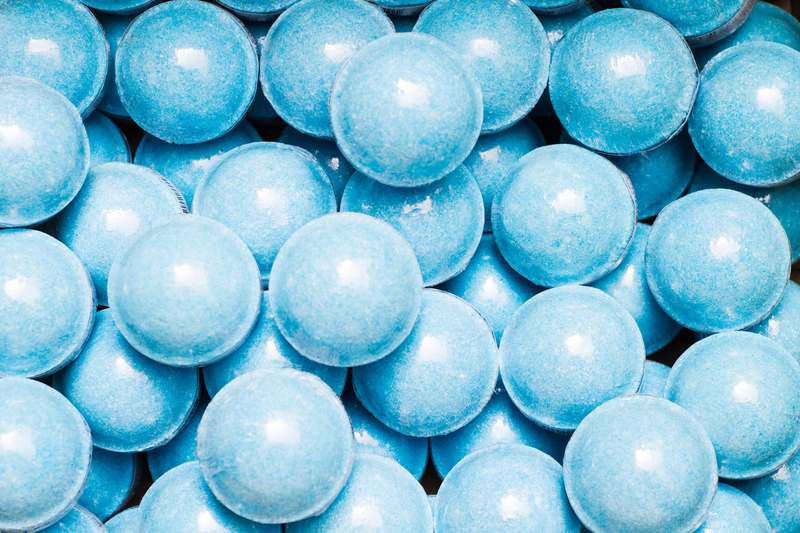Ultimate Guide to Polishing Precious Pieces
Posted on 12/06/2025
Ultimate Guide to Polishing Precious Pieces
Polishing precious pieces--from cherished jewelry to valuable antiques--preserves their luster, beauty, and value. Whether you're a seasoned collector, an aspiring jeweler, or someone who simply wants their treasured items to sparkle, the right strategies make all the difference. This comprehensive guide explores expert tips, safe techniques, and essential tools for restoring the brilliance of your most treasured possessions.
Why Polishing Precious Pieces Matters
Over time, even the most radiant items lose their shine. Dust, grime, oils, and tarnish can dull surfaces and obscure intricate details. Polishing restores both the aesthetic appeal and the value of your precious pieces, helping prevent corrosion and long-term damage.
- Maintains Value: Regular polishing preserves investment pieces and familial heirlooms.
- Prevents Damage: Cleaning away harmful substances stops decay.
- Enhances Beauty: Polishing brings out brilliant reflections and colors.
- Protects Sentimental Items: Keeps meaningful objects looking their best for years to come.

The Best Tools for Polishing Precious Pieces
The ideal tools vary depending on the materials you wish to polish. Choosing the right implements ensures gentle yet effective cleaning.
1. Soft Polishing Cloths
- Microfiber or 100% cotton cloths prevent scratching delicate surfaces.
- Always use a clean, dry cloth for gold and gemstone jewelry.
- Flannel and silk cloths work wonders for silver, brass, and bronze pieces.
2. Specialty Polishing Compounds
- Jewelry Polishing Pastes: Ideal for removing tarnish on precious metals.
- Metal Polishes: Formulated for silver, gold, platinum, copper, and other metals.
- Gemstone Polishes: Gentle or specific to a stone, these highlight natural sparkle.
3. Polishing Machines and Dremels
- Rotary tools come with buffing wheels and felt tips for detailed polishing.
- Bench polishers are great for restoring shine to watches and larger metal items.
- Always use a light hand with machinery to avoid damaging fragile items!
4. Brushes and Picks
- Ultrafine or natural-bristle brushes can help clean crevices and settings.
- Wooden toothpicks aid in gently removing grime from filigree or engravings.
5. Ultrasonic Cleaners
- Safe for many--but not all!--gemstones and metals.
- Use the manufacturer's recommendations to prevent accidental damage.
How to Safely Polish Different Precious Materials
Each precious material demands a specific method for optimal results. Follow these tailored techniques for safe, sparkling outcomes.
Polishing Gold Jewelry
- Soak in warm, soapy water for a few minutes.
- Use a soft-bristled brush or cloth to gently clean away residue.
- Buff with a jewelry-specific polishing cloth for a dazzling finish.
- Avoid harsh chemicals or abrasive pads that may scratch gold's soft surface.
Polishing Silver
- Tarnish wipes and anti-tarnish cloths effectively remove oxidation.
- For heavy tarnish, use a paste silver polish as per the directions.
- Gently move in straight lines, not circles, to avoid swirl marks.
- Store in anti-tarnish bags or cloth to keep shine lasting longer.
Restoring Shine to Gemstones
- Diamonds: Easy to clean with diluted ammonia and a soft brush.
- Soft stones (like opals, pearls, turquoise): Use only warm water and a damp cloth.
- Avoid: Ultrasonic cleaners for porous or treated gems.
- Gently buff after cleaning with a lint-free cloth.
Buffing Watches and Timepieces
- Remove straps or bands before polishing.
- Use a non-abrasive metal polish for cases and bracelets.
- Avoid moisture near mechanical parts and always dry thoroughly.
- Professional cleaning is best for vintage or luxury watches.
Polishing Antiques & Heirlooms
- Test in an inconspicuous area first--some finishes may react with modern polishes.
- Utilize mild soap and barely damp cloth for cleaning prior to polishing.
- For brass and bronze, traditional pastes like lemon and baking soda can be very effective.
- Apply polish sparingly and buff gently with the grain of the metal or wood.
DIY Polishing: Natural Remedies
Prefer to avoid commercial products? These DIY approaches are eco-friendly and often just as effective.
- Baking Soda Paste: Mix with water to create a gentle abrasive for silver and gold.
- Lemon Juice & Salt: Excellent for copper and brass. Rinse thoroughly after.
- Vinegar: Dissolves light tarnish from silver and stainless steel.
- Olive Oil: Adds subtle shine to wood, antique, and brass surfaces.
Always test natural polishes on a small, hidden spot first.
Safety Precautions for Polishing Precious Pieces
- Ventilate the workspace when using commercial polishes or machines.
- Wear gloves to protect your skin from chemicals and sharp edges.
- Read instructions on all products and tools prior to use.
- Place a towel or tray below your work area to catch any dropped items.
- Keep precious pieces away from pets and children during polishing.
*If unsure, consult a professional jeweler or conservator--especially for rare or fragile items!*
How Often Should You Polish Precious Pieces?
Frequency depends on use, storage, and exposure:
- Daily Wear Jewelry: Wipe with a soft cloth weekly, deep polish monthly.
- Occasional Use Items: Clean and polish before and after each use.
- Antiques & Displays: Twice a year or as needed to maintain luster.
Over-polishing can wear away finishes or details--gentle routine care is key.
Storage Tips to Keep Precious Pieces Polished
- Store in individual pouches, boxes, or anti-tarnish bags to reduce exposure to air and moisture.
- Add silica gel packs to storage containers for humidity control.
- Don't overcrowd; allow items space to prevent scratches and entanglement.
- Avoid prolonged sunlight exposure, which can fade gemstones and metals.
When to Seek Professional Polishing Services
Sometimes, professional polishing is the safest option. Experienced jewelers and experts possess advanced equipment and techniques for high-value or sentimental pieces.
- Resurfacing and Refinishing: Deep scratches or dents require professional machinery.
- Complex or Valuable Pieces: Vintage watches, diamond rings, and family heirlooms benefit from expert handling.
- Restoring Intricate Settings: Professionals can remove tarnish without damaging settings or loose stones.
- Ultrasonic and Steam Cleaning: Pro-grade machines clean hard-to-reach crevices.
Common Mistakes to Avoid When Polishing Precious Pieces
- Using abrasive cleaners or rough cloths--these scratch soft metals and gemstones.
- Submerging items with glued components in water or solvent.
- Mixing up polishes meant for one type of metal or stone with another.
- Not rinsing off polishing compounds, which can leave residue and cloud appearance.
- Over-cleaning antique pieces, which can strip away desirable patina or historic finishes.
Quick Reference Table: Polishing Methods by Material
| Material | Safe Polishing Method | Recommended Frequency |
|---|---|---|
| Gold | Soap & water, soft cloth, commercial gold polish | Monthly |
| Silver | Anti-tarnish cloth, silver paste | Bi-monthly |
| Diamonds | Ammonia solution, soft brush | Monthly |
| Pearls/Soft Gems | Soft damp cloth | As needed |
| Copper/Brass | Lemon & salt, metal polish | Quarterly |
| Watches | Non-abrasive polish, professional service | Annually |
| Antiques | Mild soap, minimal polish | Twice a year |

Frequently Asked Questions: Polishing Treasured Items
1. Is it safe to polish my own gemstone jewelry?
Yes, for most hard gemstones (diamonds, sapphires, rubies) using dilute soapy water and a soft brush. Never use ultrasonic cleaners or harsh chemicals on porous or treated stones.
2. How do I stop silver from tarnishing?
Store in anti-tarnish bags, keep away from humidity, and routinely buff with silver cloths to minimize tarnish buildup.
3. Can I polish gold-plated items the same way as solid gold?
No. Gold-plated jewelry is more delicate. Use only mild soap and water, avoid abrasive polishes, and buff gently.
4. What ingredients should I avoid in commercial polishes?
Steer clear of ammonia, bleach, or chlorine on most metals and all gemstones, as these can cause irreparable damage.
5. How do I fix scratched metal pieces?
Minor surface scratches can be reduced with a fine polishing compound. For deep scratches, professional refinishing is recommended.
Conclusion: Shine On--Your Precious Pieces Deserve the Best
Polishing your cherished possessions doesn't just restore their appearance--it celebrates their memories and meaning. With the right tools, safe techniques, and a gentle touch, you can maintain the luster of fine jewelry, watches, antiques, and heirlooms for generations to come.
Remember: Routine care ensures your precious pieces stay brilliant, valuable, and ready to be admired--now and always.
Explore more expert tips on jewelry care, polishing, and preservation in our resource section.





